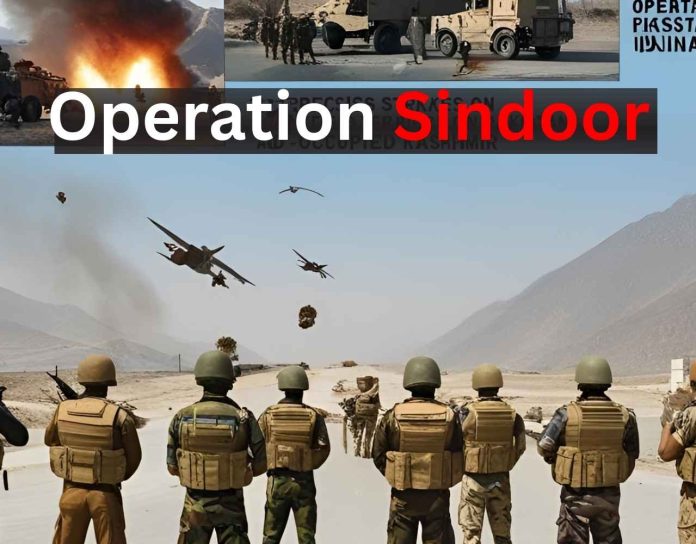In a landmark counter-terrorism move, India launched Operation Sindoor on May 6, 2025, targeting nine terrorist facilities across Pakistan and Pakistan-occupied Kashmir (PoK). This bold operation was in response to the brutal terror attack in Pahalgam, Jammu and Kashmir, that killed 26 civilians on April 22—most of them Hindu pilgrims and tourists.
The operation is being viewed as India’s most precise and strategically restrained military strike since the 2019 Balakot airstrikes. It underscores a new doctrine: zero tolerance towards cross-border terrorism.
What Triggered Operation Sindoor?
The Pahalgam terror attack shook the nation. The targets were clearly civilians, with attackers using automatic weapons and grenades to kill and injure unsuspecting tourists. According to Indian intelligence sources, the perpetrators were linked to Lashkar-e-Taiba (LeT) and Jaish-e-Mohammed (JeM)—both terror groups operating from Pakistan with alleged state backing.
As public outrage surged, the Indian government vowed “swift and decisive action.” Within two weeks, Operation Sindoor was in motion.
Inside Operation Sindoor: Targets and Strategy
Nine terror infrastructure locations were identified based on real-time intelligence and satellite imaging. These included:
- Bahawalpur and Muridke (terror hubs in Punjab, Pakistan)
- Muzaffarabad and Kotli (PoK)
- Training camps, arms depots, and safe houses used by LeT and JeM
Tactical Highlights:
- Rafale Jets: India’s advanced Rafale aircraft flew close to the LoC, launching SCALP cruise missiles and HAMMER bombs, with no airspace violation.
- Satellite Coordination: ISR (Intelligence, Surveillance, and Reconnaissance) assets fed real-time updates.
- No Civilian Targets: India claims high precision was used to avoid civilian areas, aiming exclusively at terror infrastructure.
Pakistan’s Response: Denial, Retaliation Claims, and Accusations
Pakistan labeled the operation an “act of war” and claimed:
- Downing of multiple Indian jets (unverified)
- Destruction of an Indian army brigade HQ (unconfirmed)
- Civilian casualties: 9 killed, 38 injured (according to local Pakistani officials)
However, India strongly refuted these assertions, insisting the operation only targeted terrorists and achieved “complete tactical success.”
Casualties and Damage
- Indian claims: Over 70 terrorists neutralized
- No Indian casualties or aircraft loss reported
- Civilian collateral damage is being contested; Indian officials stress minimal risk zones were selected
Domestic and Global Reactions
Indian Civil Defense Measures
- Mock drills conducted in Delhi, Punjab, Himachal Pradesh, and J&K
- Blackout drills, siren tests, and air raid readiness were carried out, last seen during the 1971 Indo-Pak war
- Srinagar airport closed, with several commercial flights disrupted
International Diplomacy
- UN and US called for calm and restraint
- Russia and France backed India’s right to self-defense against terrorism
- China remained neutral, urging de-escalation
What Makes Operation Sindoor Different?
Unlike the Balakot airstrike (2019) or Surgical Strikes (2016), Operation Sindoor was:
- Multi-target, not just a single camp
- Technologically superior, leveraging India’s full air superiority
- Legally defensible, conducted without violating Pakistani airspace
- Strategically silent, with the Indian government confirming only after results were assessed
Key Facts About Operation Sindoor
| Detail | Information |
|---|---|
| Date | May 6, 2025 |
| Trigger Event | April 22 Pahalgam terror attack |
| Targets | Terror camps in PoK and Pakistan’s Punjab |
| Weapon Systems Used | SCALP missiles, HAMMER bombs, Rafale jets |
| Casualties (as per India) | 70+ terrorists killed, no Indian losses |
| Civilian Impact (Pakistan claims) | 9 civilians dead, 38 injured |
| Global Response | Mixed—support for India’s anti-terror stance but calls for restraint |
A Red Line Has Been Drawn
Operation Sindoor sends a clear message—not just to terrorists, but to state actors who shelter them. India’s firm response to the Pahalgam killings underlines its evolving national security doctrine: pre-emptive, targeted, and strategic strikes without escalating to full-scale war.
While diplomatic efforts may yet ease tensions, Operation Sindoor will be remembered as a turning point in South Asia’s anti-terrorism narrative.































